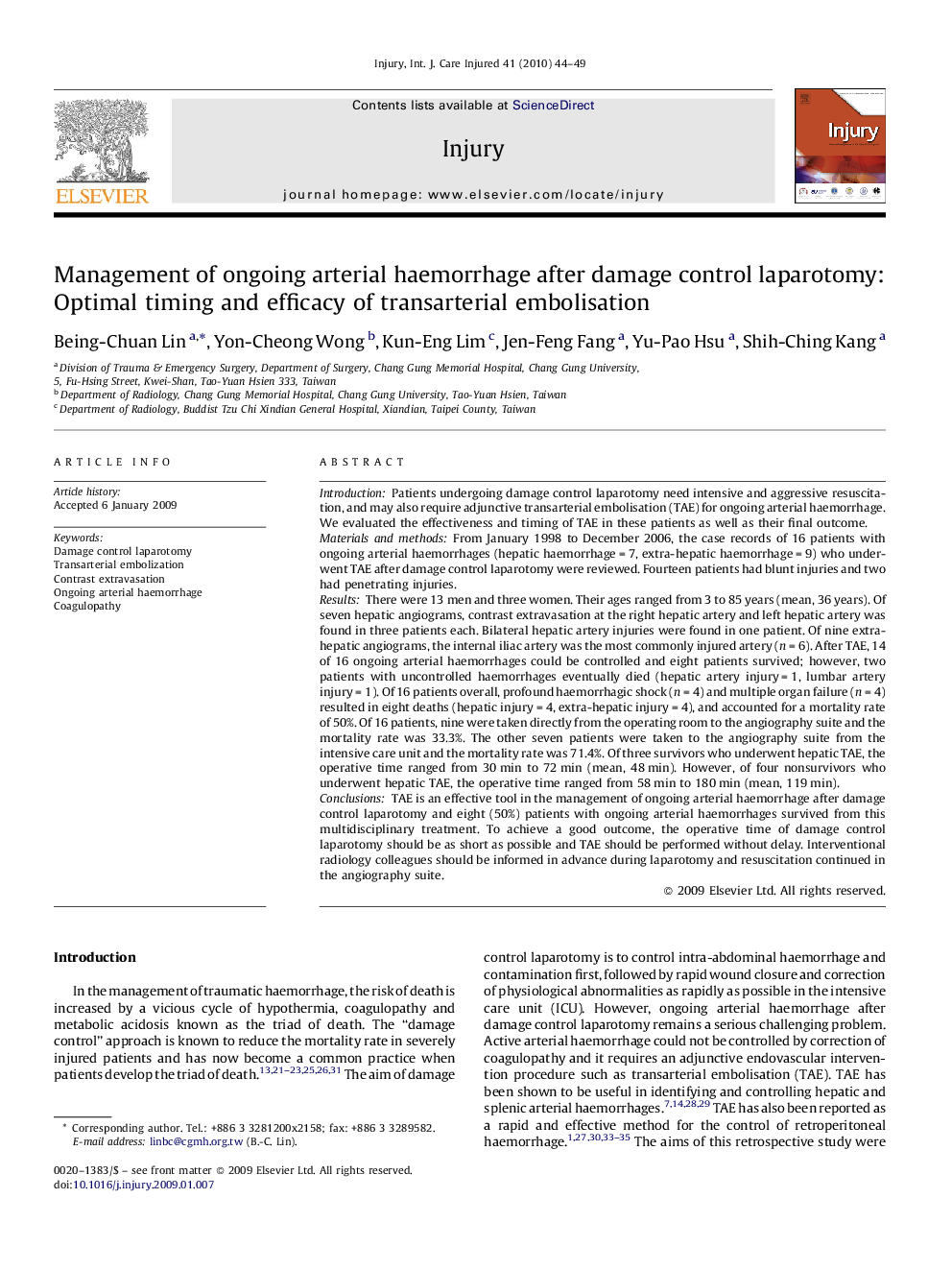| کد مقاله | کد نشریه | سال انتشار | مقاله انگلیسی | نسخه تمام متن |
|---|---|---|---|---|
| 3241731 | 1206089 | 2010 | 6 صفحه PDF | دانلود رایگان |

IntroductionPatients undergoing damage control laparotomy need intensive and aggressive resuscitation, and may also require adjunctive transarterial embolisation (TAE) for ongoing arterial haemorrhage. We evaluated the effectiveness and timing of TAE in these patients as well as their final outcome.Materials and methodsFrom January 1998 to December 2006, the case records of 16 patients with ongoing arterial haemorrhages (hepatic haemorrhage = 7, extra-hepatic haemorrhage = 9) who underwent TAE after damage control laparotomy were reviewed. Fourteen patients had blunt injuries and two had penetrating injuries.ResultsThere were 13 men and three women. Their ages ranged from 3 to 85 years (mean, 36 years). Of seven hepatic angiograms, contrast extravasation at the right hepatic artery and left hepatic artery was found in three patients each. Bilateral hepatic artery injuries were found in one patient. Of nine extra-hepatic angiograms, the internal iliac artery was the most commonly injured artery (n = 6). After TAE, 14 of 16 ongoing arterial haemorrhages could be controlled and eight patients survived; however, two patients with uncontrolled haemorrhages eventually died (hepatic artery injury = 1, lumbar artery injury = 1). Of 16 patients overall, profound haemorrhagic shock (n = 4) and multiple organ failure (n = 4) resulted in eight deaths (hepatic injury = 4, extra-hepatic injury = 4), and accounted for a mortality rate of 50%. Of 16 patients, nine were taken directly from the operating room to the angiography suite and the mortality rate was 33.3%. The other seven patients were taken to the angiography suite from the intensive care unit and the mortality rate was 71.4%. Of three survivors who underwent hepatic TAE, the operative time ranged from 30 min to 72 min (mean, 48 min). However, of four nonsurvivors who underwent hepatic TAE, the operative time ranged from 58 min to 180 min (mean, 119 min).ConclusionsTAE is an effective tool in the management of ongoing arterial haemorrhage after damage control laparotomy and eight (50%) patients with ongoing arterial haemorrhages survived from this multidisciplinary treatment. To achieve a good outcome, the operative time of damage control laparotomy should be as short as possible and TAE should be performed without delay. Interventional radiology colleagues should be informed in advance during laparotomy and resuscitation continued in the angiography suite.
Journal: Injury - Volume 41, Issue 1, January 2010, Pages 44–49